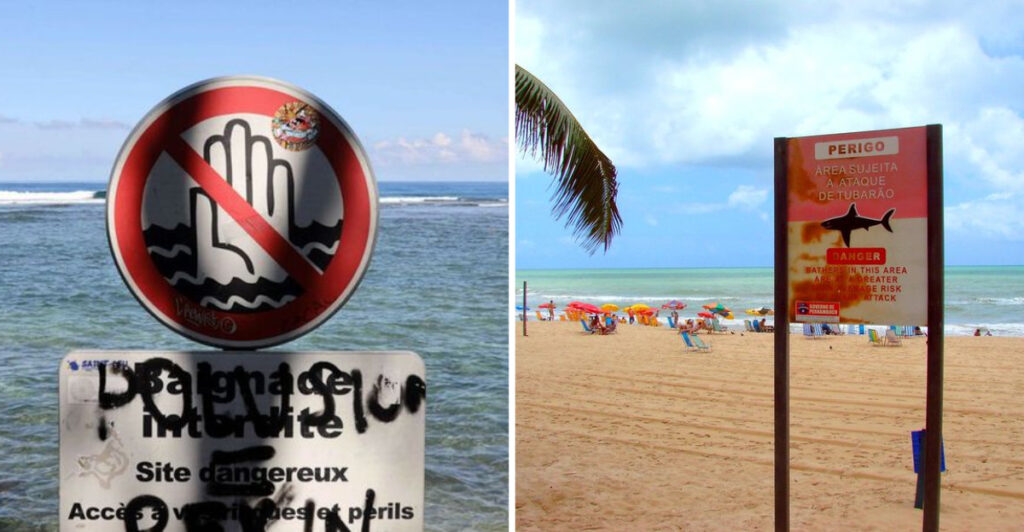When planning a beach vacation, safety is paramount. Some beaches, however, conceal hidden perils that can turn a dream day by the sea into a nightmare. From treacherous waters to unexpected wildlife encounters, these beaches have earned a reputation for danger. Here we present 11 beaches you should steer clear of, along with 9 more that pose even greater risks. Whether it’s due to strong currents, jellyfish infestations, or other hazards, these locations should be approached with caution, if not avoided altogether. Discover the beauty and the peril of these infamous shores.
Chowpatty Beach, India
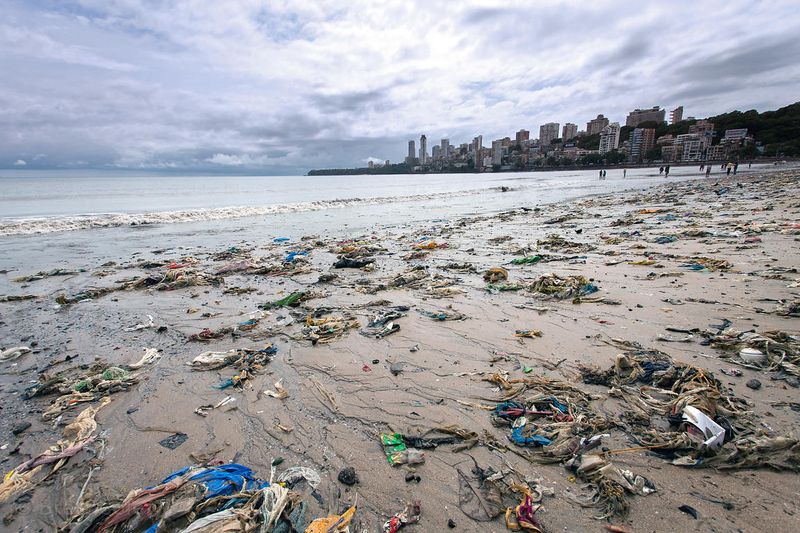
Chowpatty Beach in Mumbai is infamous for its pollution. Visitors often find trash littering the sand, and the water quality is far from inviting. Locals enjoy the beach for its vibrant street food scene, but swimming is not recommended due to health risks. Pollution levels can cause skin irritations, and the shoreline is far from pristine. Despite this, Chowpatty remains a cultural hub, teeming with life and traditional celebrations. The dichotomy of the beautiful chaos and environmental concern creates a unique yet cautionary tale for travelers.
Fraser Island, Australia
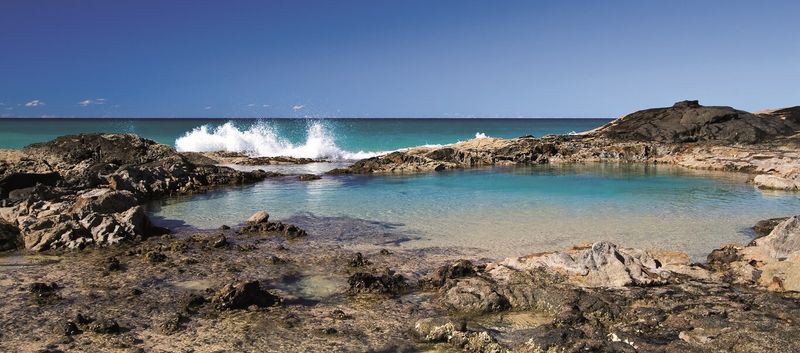
Fraser Island might look like a paradise, but it’s not for the faint-hearted. The island is notorious for strong rip currents that can catch even experienced swimmers off guard. Additionally, Fraser Island has been a hotspot for shark activity, adding to the potential dangers. The beach’s serene beauty masks these threats, offering a false sense of security. Many visitors are lured by the stunning landscapes, only to be reminded of nature’s untamed power. It’s a beautiful place for a beach stroll, but swimming requires vigilance and respect for the ocean’s might.
Kilauea Beach, Hawaii
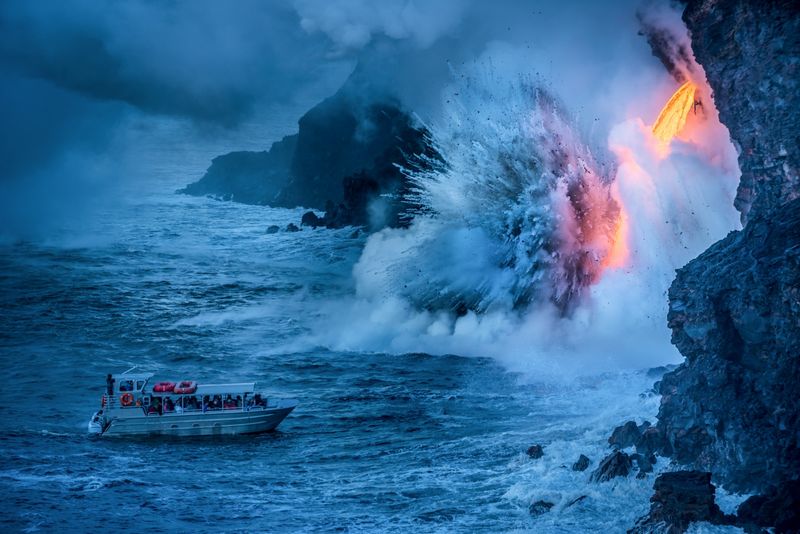
Kilauea Beach is as enchanting as it is perilous. Nestled near an active volcano, the beach features black sand and rugged beauty. However, the proximity to volcanic activity presents significant risks. Lava flows can suddenly alter the landscape, while volcanic gases pose health hazards. The beach’s otherworldly allure attracts adventure seekers, yet caution is crucial. Tourists should be aware of potential evacuations and heed local warnings. The juxtaposition of beauty and danger here offers a thrilling yet sobering experience for those who dare to visit.
Cape Tribulation, Australia
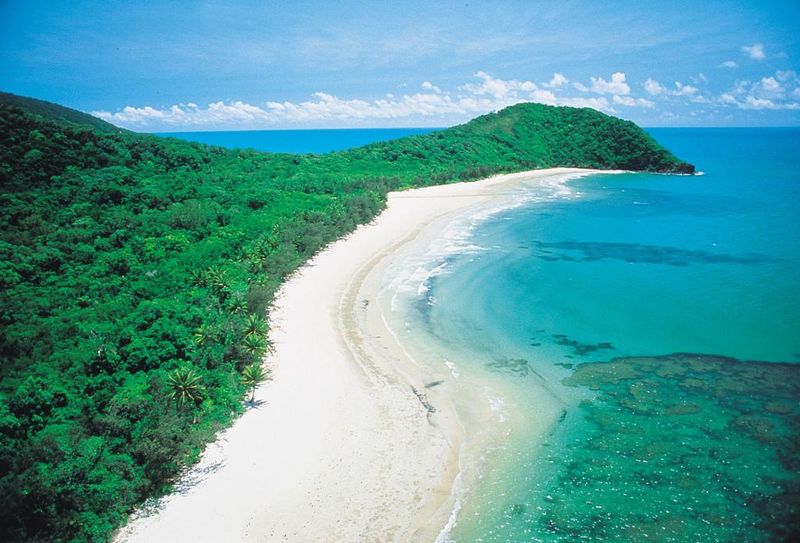
Cape Tribulation’s name is a fitting warning. Located in Queensland, Australia, this beach is notorious for its dangerous wildlife. Saltwater crocodiles roam the waters, and jellyfish can inflict painful stings. The picturesque setting, where rainforest meets the sea, belies the hazards lurking beneath. Visitors are advised to stay vigilant and heed warning signs. Despite the dangers, the area’s untamed beauty draws in adventurers looking to experience nature at its rawest. It’s a destination that requires respect for the wilderness and an understanding of the risks involved.
Gansbaai Beach, South Africa
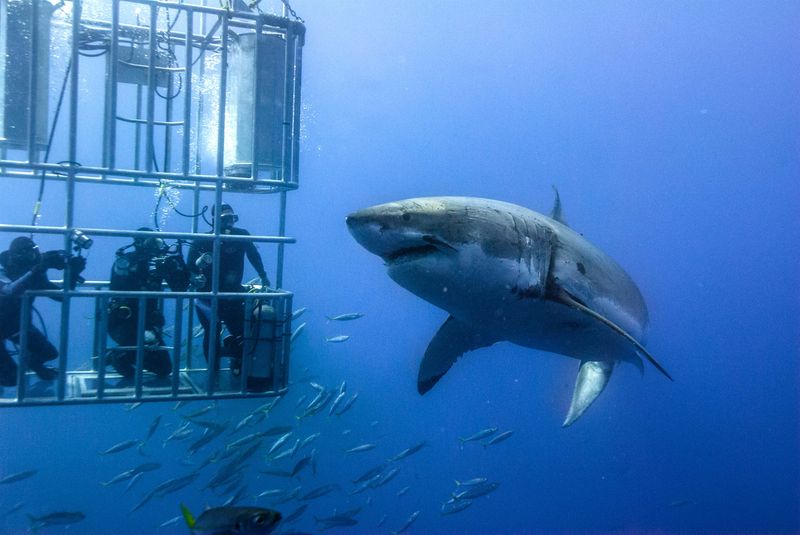
Gansbaai Beach is the ‘Great White Shark Capital’ of the world. Situated in South Africa, the beach is a popular spot for shark cage diving. While thrilling, the presence of these apex predators is a stark reminder of the ocean’s peril. The rugged cliffs and crashing waves add to the dramatic ambiance, attracting adventurous spirits. However, swimming outside of designated areas is perilous due to strong currents and the lurking giants of the deep. Gansbaai offers a unique view of marine life but demands respect and caution from all who visit.
Reunion Island, France
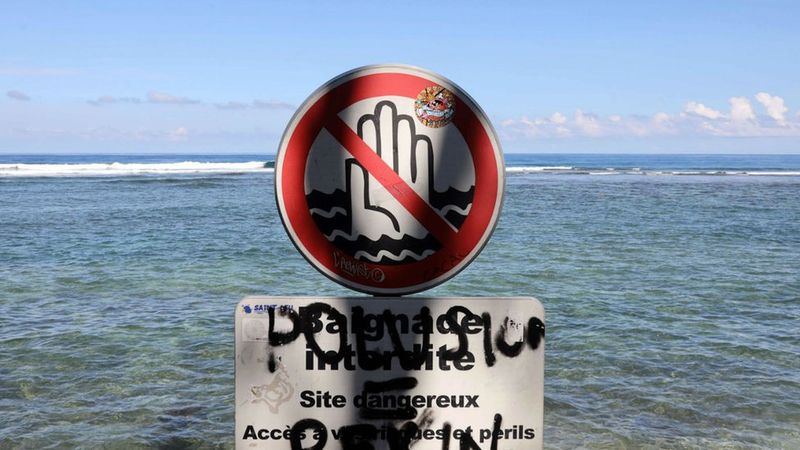
Reunion Island is a tropical paradise with a dark reputation. The island, part of France, has seen numerous shark attacks, making its beaches notoriously dangerous. The allure of the turquoise waters is hard to resist, yet swimmers must be aware of the risks. Strong currents add to the peril, making some areas off-limits. Despite the dangers, the island’s natural beauty continues to draw tourists seeking both adventure and relaxation. It’s a reminder of the delicate balance between enjoying nature and respecting its untamed elements.
New Smyrna Beach, Florida
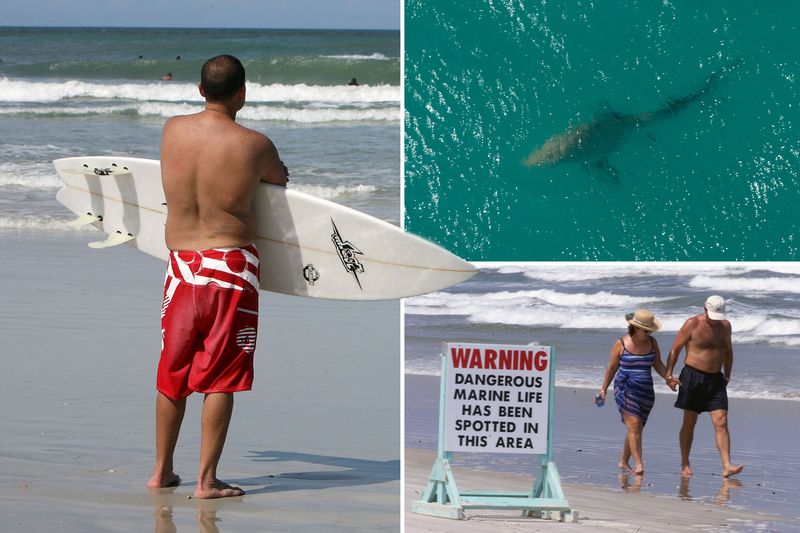
New Smyrna Beach holds the unfortunate title of ‘Shark Bite Capital of the World.’ Located in Florida, it attracts surfers and beachgoers despite the frequent shark encounters. Lifeguard towers dot the shore, a testament to the need for vigilance. The waves here are perfect for surfing, which ironically increases the chance of shark interactions. This paradox of danger and recreation creates a compelling yet cautionary atmosphere. Enjoyment of the ocean’s beauty must be tempered with awareness of the risks that lurk beneath the surface.
Praia de Boa Viagem, Brazil

Praia de Boa Viagem is a stunning Brazilian beach with a reputation for shark attacks. Its golden sands and inviting waters are deceptive, concealing the threats below. Despite its beauty, the beach has seen numerous incidents, prompting authorities to erect warning signs. The juxtaposition of picturesque scenery and lurking danger creates a unique tension for visitors. Enjoying the beach safely requires adherence to safety guidelines and awareness of local warnings. It’s a place where the allure of nature meets the reality of its inherent risks, demanding respect from all who visit.
Staithes Beach, England
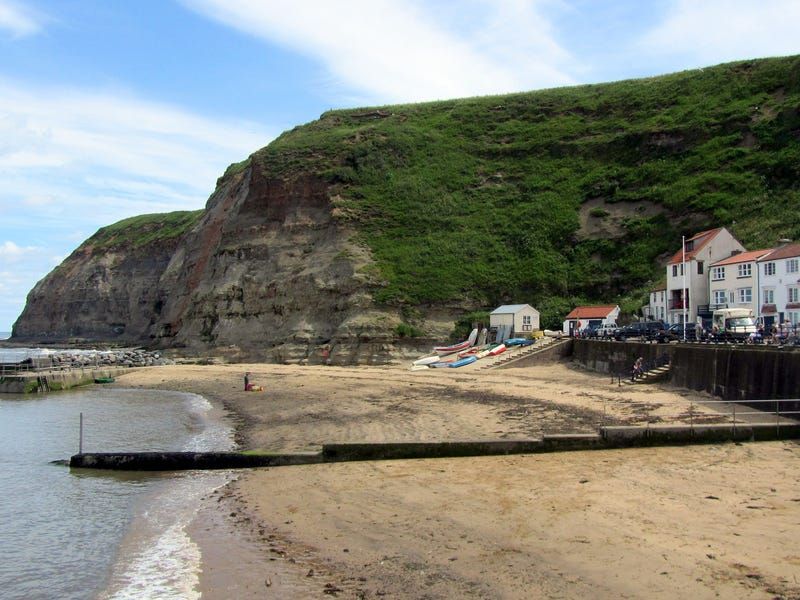
Staithes Beach in England might look quaint and charming, but its waters are some of the most polluted in Europe. The village’s picturesque atmosphere contrasts sharply with the health risks posed by swimming here. Pollution levels often exceed safety guidelines, making the water unsafe for human contact. Despite the environmental issues, Staithes retains its charm, attracting visitors with its historical allure. The contrast between the idyllic setting and the hidden dangers beneath the waves offers a sobering reminder of the impact of pollution, urging caution to all who visit.
Playa Zipolite, Mexico
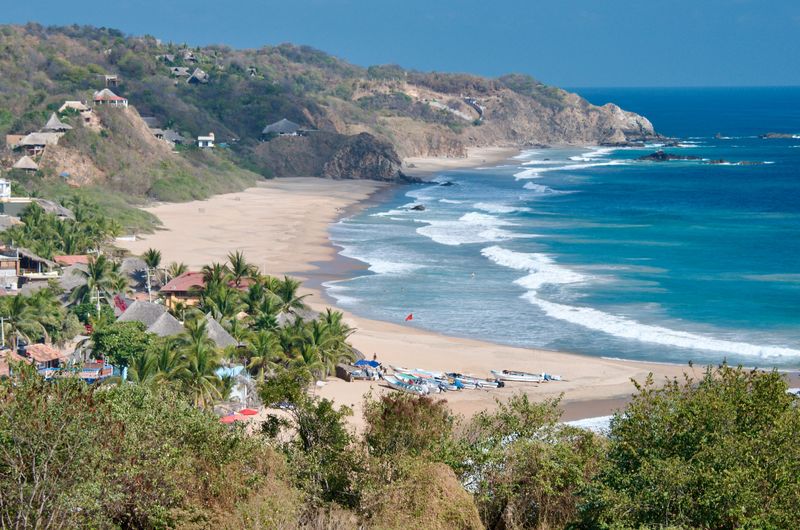
Playa Zipolite, known as the ‘Beach of the Dead,’ is famous for its dangerous currents. Located in Mexico, it attracts free-spirited travelers with its relaxed atmosphere and natural beauty. However, the waves here demand respect. Strong currents pose a serious risk to swimmers, requiring constant vigilance. Despite this, the beach’s bohemian vibe and stunning scenery continue to draw those seeking an off-the-beaten-path experience. It’s a place where the line between relaxation and risk is finely drawn, offering both tranquility and a need for caution.
Racetrack Playa, USA
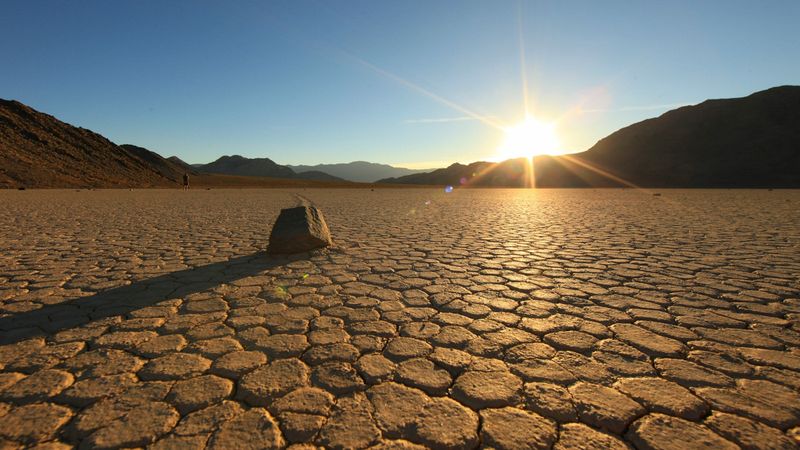
Racetrack Playa defies typical beach expectations. Located in Death Valley, USA, it’s a dry lakebed known for its mysterious moving rocks. The extreme heat and remoteness make it a challenging location to visit. Unlike coastal beaches, Racetrack Playa offers an eerie, otherworldly experience. The rocks appear to move on their own, leaving trails across the cracked earth. This natural phenomenon intrigues scientists and adventurers alike, despite the harsh conditions. It’s a destination that invites exploration and curiosity, reminding visitors of nature’s mysterious and unforgiving character.
Bikini Atoll, Marshall Islands
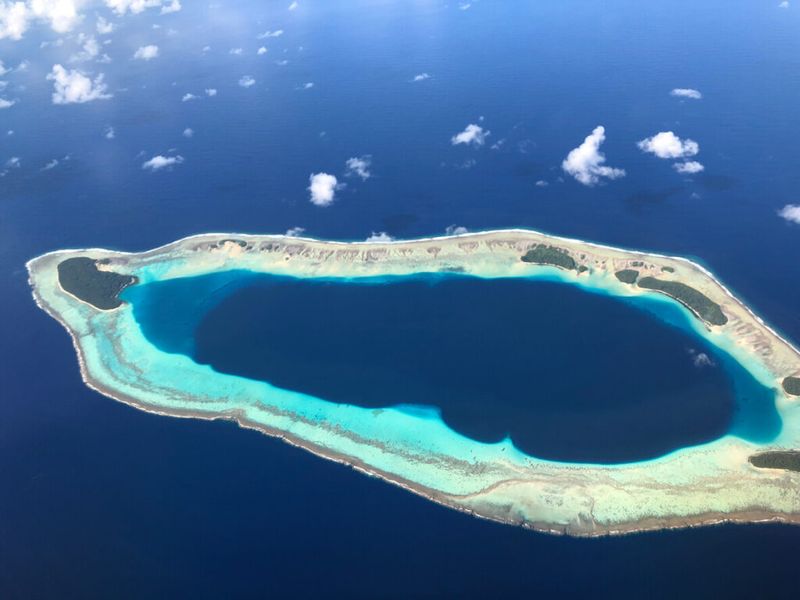
Bikini Atoll, known for its nuclear testing history, is more dangerous than its idyllic appearance suggests. The crystal-clear waters belie the lingering radiation risks from past atomic experiments. While the atoll’s beauty is undeniable, the health hazards cannot be ignored. Despite these dangers, Bikini Atoll remains a site of interest for history buffs and adventurous travelers. Exploring this remote location offers a glimpse into a unique part of history, albeit with caution. The contrast between the serene landscape and its radioactive past creates a hauntingly beautiful yet hazardous destination.
Skeleton Coast, Namibia
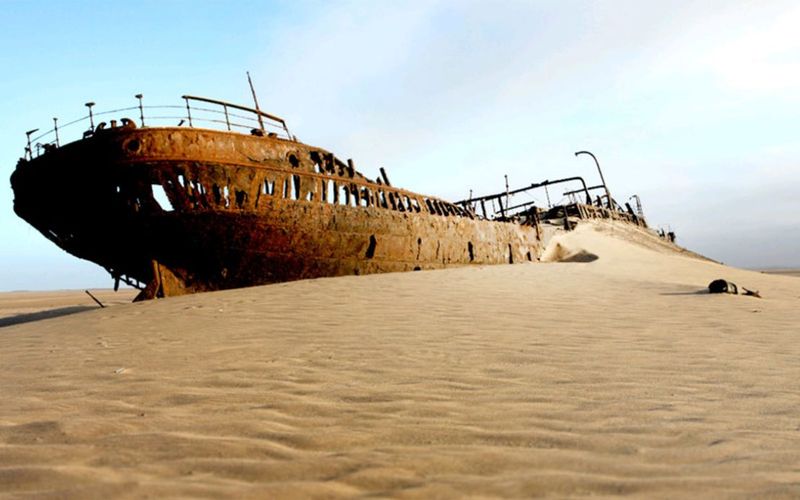
The Skeleton Coast in Namibia is as foreboding as its name suggests. This desolate stretch of coastline is littered with shipwrecks and shrouded in fog, creating an eerie atmosphere. The harsh climate and treacherous waters make it a challenging place for any traveler. Despite its grim reputation, the Skeleton Coast is hauntingly beautiful, attracting those fascinated by its stark landscape and history. The beach’s name serves as a reminder of the perils that sailors faced, offering a poignant glimpse into nature’s unforgiving side. Caution and preparation are key when exploring this enigmatic place.
Mont Saint-Michel, France

Mont Saint-Michel is a mesmerizing tidal island in France with unique dangers. Known for its quicksand and rapidly rising tides, it presents unexpected risks to the unwary. The island’s picturesque beauty and historical significance make it a popular destination. However, visitors must heed warnings about the shifting sands and unpredictable waters. Exploring Mont Saint-Michel requires awareness and respect for nature’s power. The harmonious blend of history and peril creates a captivating yet challenging experience for travelers, offering both inspiration and a stark reminder of the natural world’s might.
Hanakapiai Beach, Hawaii
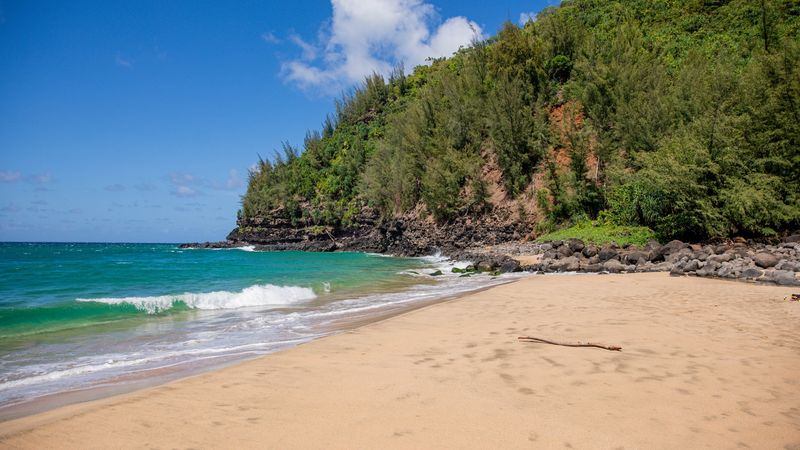
Hanakapiai Beach, with its breathtaking beauty, hides a treacherous secret. Located on the Na Pali Coast of Hawaii, it is notorious for its dangerous waves and strong currents. The beach’s remote location adds to the challenge, with no lifeguards present to assist in emergencies. Despite the inherent risks, the scenery is undeniably captivating, attracting adventurous hikers and nature lovers. Visitors are urged to admire the view from a safe distance and respect the ocean’s power. This hidden gem offers both awe and caution, a testament to nature’s duality.
Amazon Beach, Brazil
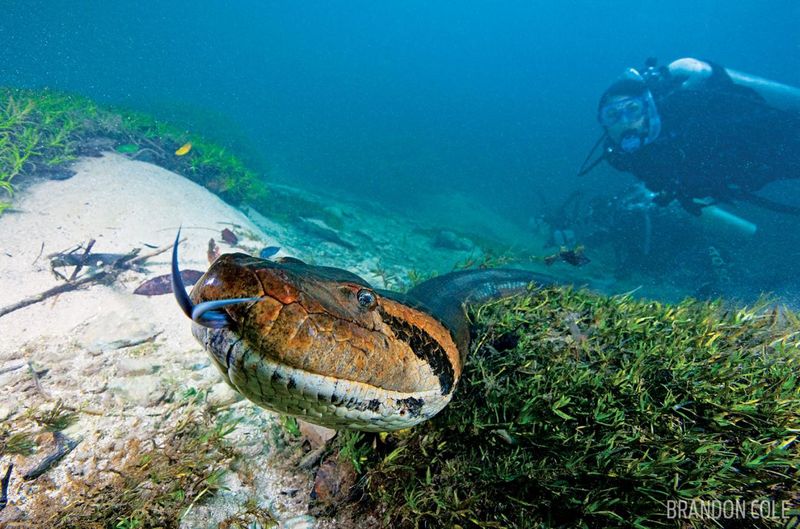
Amazon Beach, located along the mighty Amazon River, is as wild as it gets. The remote location and challenging access deter casual visitors, while the presence of dangerous wildlife adds to the risks. Piranhas and caimans inhabit the waters, posing threats to those who dare to swim. Despite the dangers, the untamed beauty of the Amazon captivates those seeking a raw and unfiltered experience. It’s a place where nature reigns supreme, and visitors must navigate the delicate balance between admiration and caution, respecting the wildness that defines this extraordinary region.
Lamu Beach, Kenya
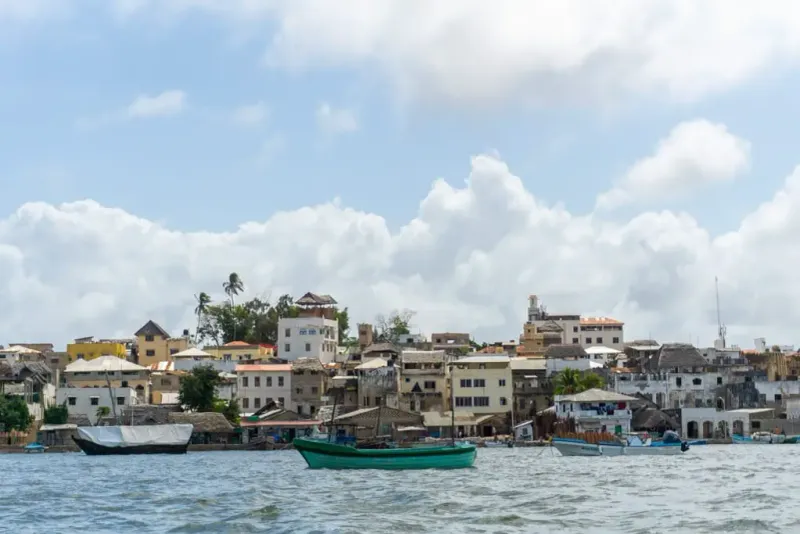
Lamu Beach in Kenya, while stunning, is overshadowed by the threat of piracy. The beautiful coastline and rich cultural heritage attract tourists, but maritime security concerns remain prevalent. The potential for piracy and other maritime threats requires vigilance from visitors. Despite these challenges, Lamu offers a unique blend of history, culture, and natural beauty. Travelers are drawn to its charm, yet must remain aware of the risks. This juxtaposition of allure and danger creates a compelling narrative for those exploring this coastal gem, demanding respect and caution.
Chatham Islands, New Zealand
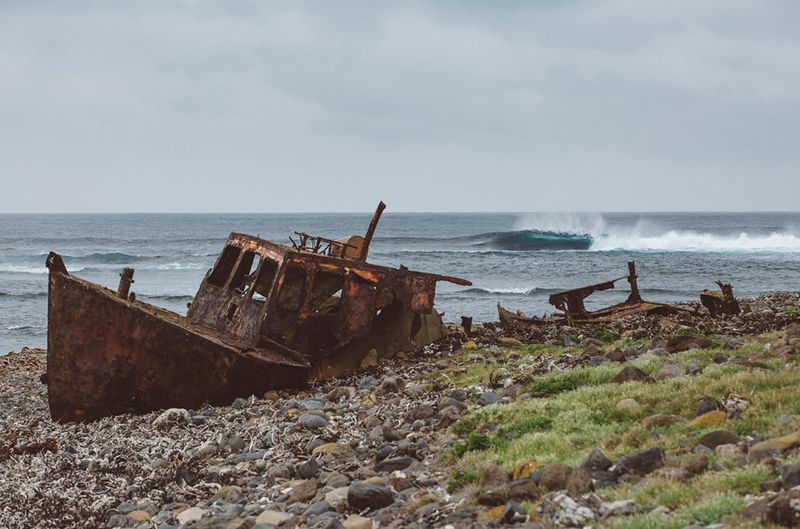
The Chatham Islands, located off the coast of New Zealand, are as remote as they are rugged. The islands’ isolation and rough seas have led to numerous shipwrecks throughout history. While the natural beauty of the Chatham Islands is captivating, the challenging conditions demand respect and preparation from visitors. The islands offer a unique escape from the hustle of modern life, inviting exploration of their untamed landscapes. However, the allure of isolation is tempered by the need for caution, as the wild seas and rugged terrain present constant challenges to those who venture here.
Copacabana Beach, Brazil

Copacabana Beach is iconic for its lively vibe and beautiful shores. However, it also faces significant safety concerns. Located in Rio de Janeiro, Brazil, the beach is a hotspot for tourists and locals alike. Yet, crime rates in the area can be high, necessitating caution. Despite this, the beach’s energy and cultural significance make it a must-visit destination. Visitors are advised to remain vigilant while enjoying the sun and sand. The contrast between vibrancy and vigilance creates a dynamic environment where enjoyment must be balanced with awareness, adding depth to the iconic experience.
Shark Bay, Australia
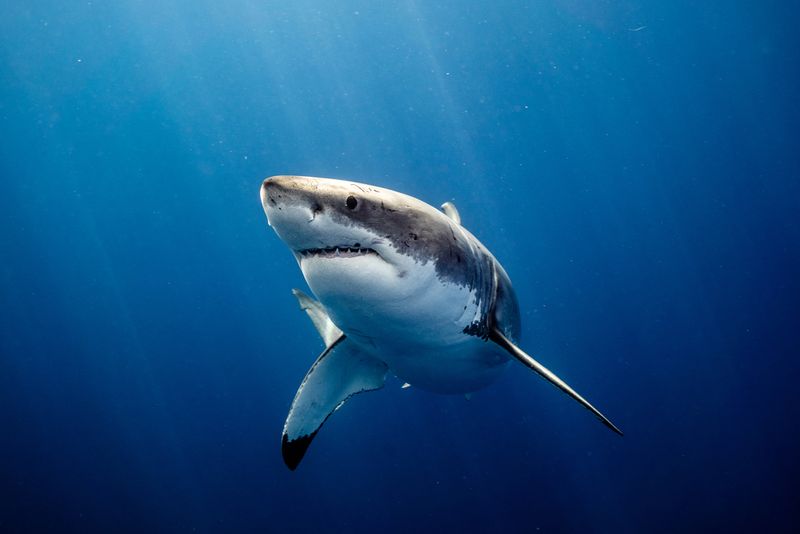
In the vast expanse of Australia, Shark Bay stands out not just for its beauty but for its peril. This UNESCO World Heritage Site is renowned for its rich marine life, but it’s also home to a dense shark population. The currents can be deceptively strong, catching even experienced swimmers off guard.
Despite the danger, the bay’s allure is undeniable, with its striking turquoise waters and rugged coastline. The diverse ecosystem includes dugongs and dolphins, attracting adventurous tourists.
However, caution is advised, as the combination of marine predators and tidal forces make it one of the riskiest swimming spots.

